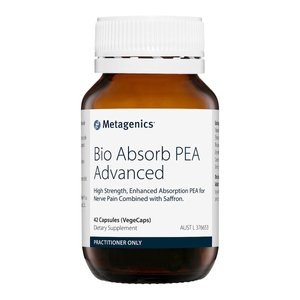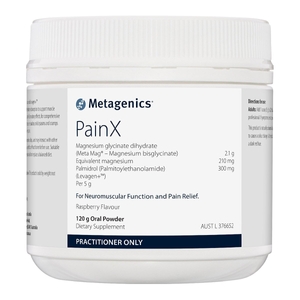
Focus On… When the fire starts to burn: strategies to improve pain
With nearly a quarter of the population experiencing chronic pain (1), the need for effective therapeutics is paramount. Within this population, musculoskeletal conditions account for the greatest proportion of persistent pain (2), while 20% of individuals suffer from nerve pain (3). Sadly, conventional pain relief often fails to reduce symptom severity, causing individuals to cope with the day-to-day burden of chronic pain. For example, in sciatic pain, up to 75% of patients report moderate to severe pain despite the use of analgesics such as opioids (4). Furthermore, over two thirds of these patients have been shown to discontinue conventional treatment due to adverse side effects and ineffective pain control (5), highlighting the clinical challenges of managing chronic pain.
A new era of effective therapies is on the horizon: CBD and PEA
Therapeutics that target the body’s endogenous cannabinoid system (ECS) offer a novel solution to improve chronic pain. The ECS is a neuromodulatory system that produces lipid mediators, known as endocannabinoid compounds (eCbs), which bind to and activate cannabinoid receptors (CB1 and CB2), subsequently exerting anti-inflammatory and analgesic effects (6,7,8).
Evidence-based remedies that influence ECS function include cannabidiol (CBD), a non-psychoactive compound derived from Cannabis sativa (9), and palmitoylethanolamide (PEA), an endogenously produced lipid mediator (10,11). CBD and PEA share common actions, with both mediators shown to moderate pain signalling. However, unlike PEA, CBD products are not widely available to natural health Practitioners. Fortunately, PEA provides a viable and effective alternative, with research demonstrating 600 mg/d of PEA minimised chronic neuropathic pain ![]() scores by 50% in 66% of patients
scores by 50% in 66% of patients ![]() (12,13). Further, PEA’s safety, tolerability and quality consistency is more clearly established than its CBD counterpart (14). As such, PEA offers Practitioners an accessible and reliable treatment strategy to minimise chronic pain.
(12,13). Further, PEA’s safety, tolerability and quality consistency is more clearly established than its CBD counterpart (14). As such, PEA offers Practitioners an accessible and reliable treatment strategy to minimise chronic pain.
Understanding the mother of all pain: neuropathic pain
Damage to sensory neurons can lead to neuropathic pain (15), seen in conditions such as type 2 diabetes, autoimmune disease (e.g. multiple sclerosis), infection (e.g. shingles) or due to structural causes such as a herniated disc (16,17). Symptoms can include burning, ‘pins and needles,’ sharp or shooting sensations, numbness and pain that radiates along a specific dermatome ![]() .
.
Neuropeptides such as substance P and calcitonin gene-related peptide (CGRP) are released following nerve injury, which stimulate production of inflammatory mediators including interleukin-1 (IL-1), IL-6 and tumor necrosis factor-alpha (TNF-α) (18). This in turn increases pain receptor sensitivity (19,20) and glial cell activation ![]() in the central nervous system, subsequently amplifying pain signalling and severity (21).
in the central nervous system, subsequently amplifying pain signalling and severity (21).
Minimising nerve pain with pea, saffron and thiamine
To lessen neuropathic pain, PEA and saffron diminish glial cell activation ![]() (22,23) and desensitise pain receptors (24,25), providing analgesic and neuroprotective benefits. For instance, in sciatic pain, 600 mg/d of PEA prescribed for 30 days reduced pain scores from 71% to 21% (26). Moreover, in patients with traumatic nerve injury and diabetic neuropathy, 1,200 mg/d of PEA over 50 days reduced pain by 24% and improved neuropathic symptoms (e.g. burning and tingling; p<0.025) (27). Additionally, saffron has been shown to improve motor function following nerve injury (28), while thiamine supports pain control (29) by enhancing synthesis of inhibitory neurotransmitter, gamma-aminobutyric acid (GABA), subsequently increasing pain tolerance (30).
(22,23) and desensitise pain receptors (24,25), providing analgesic and neuroprotective benefits. For instance, in sciatic pain, 600 mg/d of PEA prescribed for 30 days reduced pain scores from 71% to 21% (26). Moreover, in patients with traumatic nerve injury and diabetic neuropathy, 1,200 mg/d of PEA over 50 days reduced pain by 24% and improved neuropathic symptoms (e.g. burning and tingling; p<0.025) (27). Additionally, saffron has been shown to improve motor function following nerve injury (28), while thiamine supports pain control (29) by enhancing synthesis of inhibitory neurotransmitter, gamma-aminobutyric acid (GABA), subsequently increasing pain tolerance (30).
Highly Bioavailable Palmitoylethanolamide (PEA) with Saffron and Thiamine for Nerve Pain contains PEA combined with Lipisperse technology, improving its uptake by the body by 70% (31). As such, a 600 mg/d dose of Levagen PEA (equivalent to two capsules) is comparable to 1,020 mg/d of standard PEA (32), demonstrating increased efficacy at a reduced dose.
Managing menacing musculoskeletal pain
In muscular disorders such as lower back pain and fibromyalgia, prolonged inflammation leads to hyperexcitation of muscle tissue, which promotes tension at the expense of relaxation (33). Consequently, this can trigger pain (e.g. cramping) and restrict mobility (34), as well as aggravating neuromuscular conditions characterised by nociceptive pain ![]() and neuropathic pain such as tendonitis and nerve compression, respectively (35).
and neuropathic pain such as tendonitis and nerve compression, respectively (35).
To reduce pain, magnesium and PEA help to minimise muscle tension and nerve sensitivity. For instance, magnesium has been shown to induce muscle relaxation (36) while also downregulating glutamate activity, an excitatory neurotransmitter that increases pain signalling (37). Illustrating this, 300 mg/d of magnesium bisglycinate prescribed for four weeks has been shown to reduce cramp frequency and intensity by 50% (p<0.05) (38). While in patients with fibromyalgia, 1,200 mg/d PEA for four weeks followed by 600 mg/d for an additional eight weeks was shown to diminish pain severity by 50% (39).
As such, Levagen+™ PEA combined with Meta Mag® Magnesium bisglycinate, found in Highly Bioavailable PEA and Magnesium for Neuromuscular Support and Pain, demonstrates clinical efficacy in alleviating muscular pain. Additionally, Meta Mag® Magnesium bisglycinate exhibits superior bioavailability compared to other forms of magnesium such as magnesium oxide and citrate (40,41), further supporting the utility of this formulation.
Break on through to the other side of pain, naturally
To facilitate patient recovery, Practitioners can confidently prescribe evidence-based natural medicines that enhance pain management. For neuropathic pain and nerve injury, Highly Bioavailable Palmitoylethanolamide (PEA) with Saffron and Thiamine for Nerve Pain can significantly reduce intense pain. Alternatively, Highly Bioavailable PEA and Magnesium for Neuromuscular Support and Pain alleviates musculoskeletal discomfort, allowing patients to experience more freedom and less pain in life.





